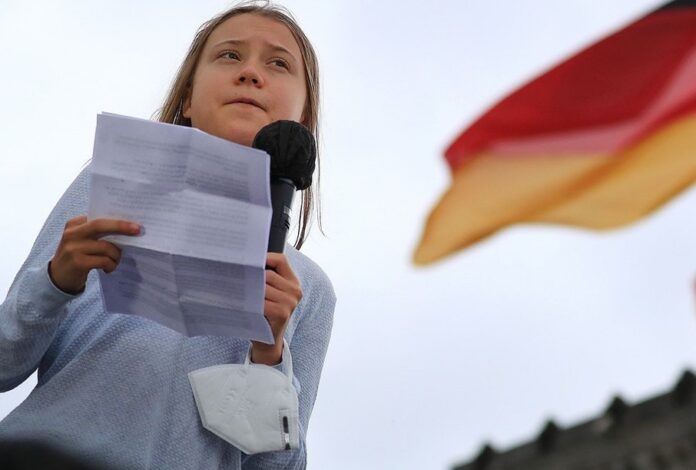
Germany’s knee-jerk policy response to the Fukushima, Japan 2011 nuclear disaster was to begin a process to eliminate its 17 reactors by 2022. At the time these plants were providing 25% of the country’s electricity. By 2019 as reactors were mothballed, nuclear’s contribution fell to 12%.
Other energy sources in 2019 included coal producing 30%, wind at 21%, biofuels at 9%, solar at 8%, hydro at 4%, and oil at 1%. Natural gas was at 9% that year and seen as a transitional fuel to fill in for closed nuclear plants and as a replacement for coal-fired energy as these too were phased out.
The country turned to a cheap reliable source of gas in Russia and committed itself to pipelines that are today shut down or decommissioned because of Russia’s invasion of Ukraine. So Germany, now down to its last three nuclear reactors, is bringing coal-fired power plants back online as an interim measure rather than restoring its nuclear reactors.
Greta Thunberg, the Swedish teenage environmentalist who began a solo strike outside the Swedish legislature that became Skolstrejk för Klimatet (The School Strike for Climate) inspiring hundreds of thousands of youth to walk out of classrooms and which today is known as the Fridays for Future movement, when asked in an interview about Germany’s remaining operating nuclear plants stated, “it’s a mistake to close them down in order to focus on coal.”
There is no doubt that nuclear power has a radioactive waste problem but when compared to the impact of coal-fired power and the greenhouse gasses (GHG) these plants emit, the environmental challenges of the latter are disproportionally much greater.
The coalition government in Germany, whose minister for the economy and energy policy is a member of the anti-nuclear Green Party remains committed to ending the nuclear power industry even in the face of severe energy shortages that are impacting the country’s industries and raising electricity costs dramatically.
Germany isn’t alone in facing the nuclear question. Many members of the European Union (EU) have nuclear power plants and the continental bloc is aggressively aiming to reduce GHGs by at least 55% below 1990 levels by 2030. Many of the EU member states saw Russian-supplied natural gas as a transitional fuel that would end their reliance on coal and nuclear.
But the war in Ukraine has changed everything except the politicians who currently drive Germany’s nuclear energy policy. In August, however, when the German public was asked its opinion, only 15% in the poll favoured closing the remaining nuclear facilities by the end of the year. In the poll, 41% favoured extending plant operations beyond the year-end, and an equal 41% indicated the country should continue nuclear power for the long term. Even the majority of Green Party members who were polled favoured continuing to operate these plants.
The environmental impact of nuclear power remains a problem. The United States which generates about 20% of its electricity from nuclear plants produces 2,000 tons of radioactive waste annually. Since the first nuclear plants came online in 1951, the country has produced approximately 90,000 tons of radioactive waste. When you compare that number to the scale of GHGs produced annually by coal-fired thermal energy plants in the U.S., measuring in billions of tons annually, nuclear waste is disproportionately small.
Thunberg clearly understands these numbers and the geopolitical and environmental consequences of shutting down Germany’s nuclear plants. She has weighed the evidence and expressed an opinion that environmentalists should note.
Meanwhile, nuclear power is enjoying a renaissance as of late. Why? The Russian-Ukraine war is certainly one reason. But others include the development of next-generation micro and modular reactors, molten salt, thorium-fuelled systems, fusion energy, and the reuse of spent fuels. And as for the radioactive waste that cannot be recycled as fuel, countries like Finland and France have projects underway to build underground nuclear waste disposal sites designed for safe storage for tens of thousands of years.
Other nuclear power news beyond Germany notes that California recently reversed its decision to close the last remaining nuclear power plant in the state. Japan, a decade after Fukushima, is restarting mothballed nuclear reactors. The new South Korean administration is supporting the expansion of nuclear power. And Ontario has plans in the works to extend the life of existing nuclear reactors that were to be decommissioned and is building the first of its kind micro-modular reactor. These recent decisions portend a future where nuclear has a place in the transition to a net-zero emissions future.








